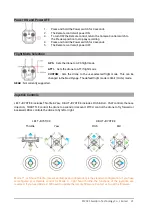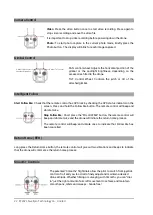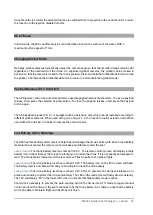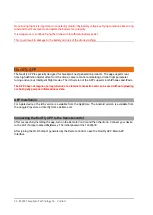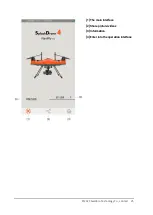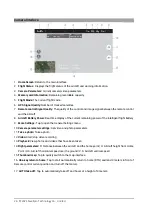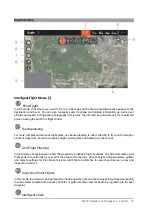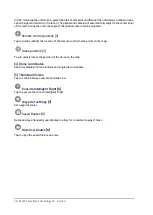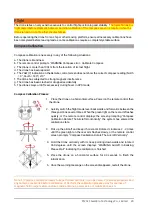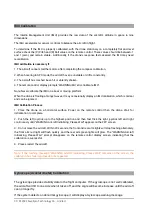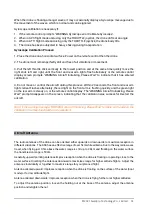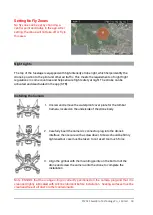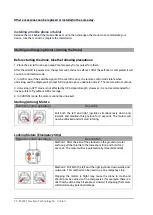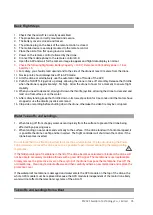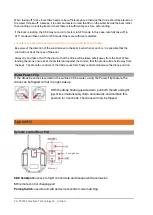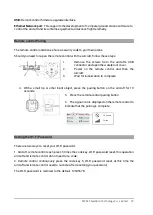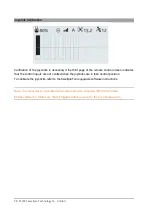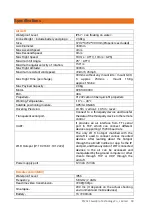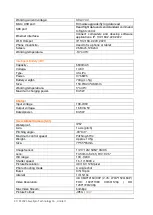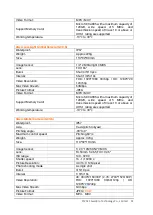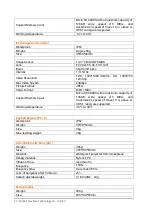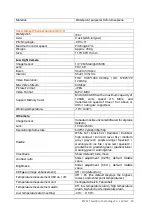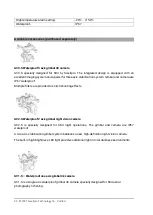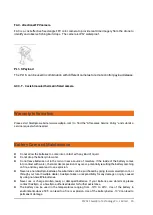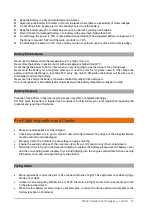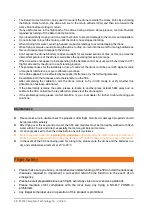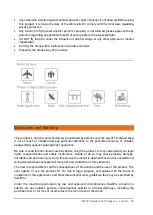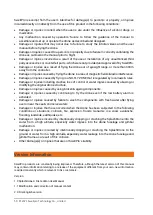
©2021 Swellpro Technology Co., Limited 35
Basic Flight Steps
1.
Check that the aircraft is correctly assembled.
2.
The propellers are correctly mounted and secure.
3.
The battery cover is closed and locked.
4.
The silicone plug on the back of the remote control is closed.
5.
The mobile device is securely mounted to the remote control.
6.
Place the aircraft on flat open ground or water.
7.
Power on the remote control, followed by the drone.
8.
Connect the mobile phone to the remote control Wi-Fi
a.
Open the APP and wait for the camera image to appear and flight data display is normal.
9.
Check the following flight data: Battery capacity > 16.0V; Remote control battery power > 1 bar;
Satellite > 5.
10.
For safety, you should stand upwind and to the side of the drone at least 3 meters from the drone.
11.
Novice pilots should always take-off in GPS mode.
12.
Arm the drone or alternatively, use the automatic take-off mode of the APP.
13.
Push the THROTTLE joystick up slowly, allowing the drone to take off smoothly. Release the throttle
when the drone is approximately 1.5m high. Allow the drone to hover for a moment to ensure flight
stability.
14.
When you need to descend, slowly pull down the throttle joystick, allowing the drone to descend and
land on a flat surface or on the water.
15.
After safely landing, keep the throttle down in its lowest position for 3 seconds until the motors have
stopped or use the disarm joystick command.
16.
Stop video recording before shutting down the drone, otherwise the video file may be corrupted.
Water Take-offs and Landings
1.
When taking off from choppy water, ascend quickly from the surface to prevent the drone being
affected by a passing wave.
2.
When landing on water, descend vertically to the surface. If the drone lands with horizontal speed, it
is possible the drone can flip and be inverted. The flight controller will shut down the motors if the
drone becomes inverted.
Do not leave the drone floating inverted for more than a few minutes. Flip the drone using the Power-
Flip command or recover the drone as soon as possible to avoid water saturating the waterproofing
membrane.
If the hidden waterproof membrane in the lid of the drone becomes saturated or blocked, the drone will
not be able to accurately maintain altitude with a good GPS signal. The membrane is user replaceable.
Simply, remove the protective cover on the very top of the drone to expose the membrane. Peel off the
old membrane. Clean any residual adhesive and then carefully adhere a new membrane and replace the
protective cover.
If the waterproof membrane is damaged and water enters the GPS module on the top of the drone, the
whole GPS module must be replaced. Because the GPS module is independent of the main drone body
water will not affect other electronic systems of the aircraft.
Take-offs and Landings from a Boat

